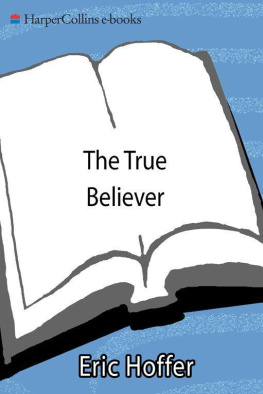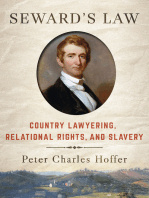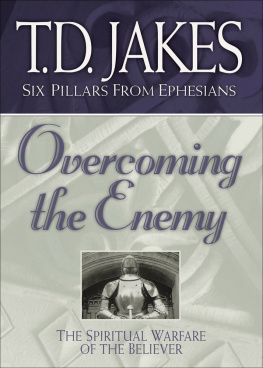Man would fain be great and sees that he is little; would fain be happy and sees that he is miserable; would fain be perfect and sees that he is full of imperfections; would fain be the object of the love and esteem of men, and sees that his faults merit only their aversion and contempt. The embarrassment wherein he finds himself produces in him the most unjust and criminal passions imaginable, for he conceives a mortal hatred against that truth which blames him and convinces him of his faults.
And slime had they for mortar.
This book deals with some peculiarities common to all mass movements, be they religious movements, social revolutions or nationalist movements. It does not maintain that all movements are identical, but that they share certain essential characteristics which give them a family likeness.
All mass movements generate in their adherents a readiness to die and a proclivity for united action; all of them, irrespective of the doctrine they preach and the program they project, breed fanaticism, enthusiasm, fervent hope, hatred and intolerance; all of them are capable of releasing a powerful flow of activity in certain departments of life; all of them demand blind faith and singlehearted allegiance.
All movements, however different in doctrine and aspiration, draw their early adherents from the same types of humanity; they all appeal to the same types of mind.
Though there are obvious differences between the fanatical Christian, the fanatical Mohammedan, the fanatical nationalist, the fanatical Communist and the fanatical Nazi, it is yet true that the fanaticism which animates them may be viewed and treated as one. The same is true of the force which drives them on to expansion and world dominion. There is a certain uniformity in all types of dedication, of faith, of pursuit of power, of unity and of self-sacrifice. There are vast differences in the contents of holy causes and doctrines, but a certain uniformity in the factors which make them effective. He who, like Pascal, finds precise reasons for the effectiveness of Christian doctrine has also found the reasons for the effectiveness of Communist, Nazi and nationalist doctrine. However different the holy causes people die for, they perhaps die basically for the same thing.
This book concerns itself chiefly with the active, revivalist phase of mass movements. This phase is dominated by the true believerthe man of fanatical faith who is ready to sacrifice his life for a holy causeand an attempt is made to trace his genesis and outline his nature. As an aid in this effort, use is made of a working hypothesis. Starting out from the fact that the frustrated predominate among the early adherents of all mass movements and that they usually join of their own accord, it is assumed: 1) that frustration of itself, without any proselytizing prompting from the outside, can generate most of the peculiar characteristics of the true believer; 2) that an effective technique of conversion consists basically in the inculcation and fixation of proclivities and responses indigenous to the frustrated mind.
To test the validity of these assumptions, it was necessary to inquire into the ills that afflict the frustrated, how they react against them, the degree to which these reactions correspond to the responses of the true believer, and, finally, the manner in which these reactions can facilitate the rise and spread of a mass movement. It was also necessary to examine the practices of contemporary movements, where successful techniques of conversion had been perfected and applied, in order to discover whether they corroborate the view that a proselytizing mass movement deliberately fosters in its adherents a frustrated state of mind, and that it automatically advances its interest when it seconds the propensities of the frustrated.
It is necessary for most of us these days to have some insight into the motives and responses of the true believer. For though ours is a godless age, it is the very opposite of irreligious. The true believer is everywhere on the march, and both by converting and antagonizing he is shaping the world in his own image. And whether we are to line up with him or against him, it is well that we should know all we can concerning his nature and potentialities.
It is perhaps not superfluous to add a word of caution. When we speak of the family likeness of mass movements, we use the word family in a taxonomical sense. The tomato and the nightshade are of the same family, the Solanaceae. Though the one is nutritious and the other poisonous, they have many morphological, anatomical and physiological traits in common so that even the non-botanist senses a family likeness. The assumption that mass movements have many traits in common does not imply that all movements are equally beneficent or poisonous. The book passes no judgments, and expresses no preferences. It merely tries to explain; and the explanationsall of them theoriesare in the nature of suggestions and arguments even when they are stated in what seems a categorical tone. I can do no better than quote Montaigne: All I say is by way of discourse, and nothing by way of advice. I should not speak so boldly if it were my due to be believed.
PART 1
The Appeal of Mass Movements
I
The Desire for Change
It is a truism that many who join a rising revolutionary movement are attracted by the prospect of sudden and spectacular change in their conditions of life. A revolutionary movement is a conspicuous instrument of change.
Not so obvious is the fact that religious and nationalist movements too can be vehicles of change. Some kind of widespread enthusiasm or excitement is apparently needed for the realization of vast and rapid change, and it does not seem to matter whether the exhilaration is derived from an expectation of untold riches or is generated by an active mass movement. In this country the spectacular changes since the Civil War were enacted in an atmosphere charged with the enthusiasm born of fabulous opportunities for self-advancement. Where self-advancement cannot, or is not allowed to, serve as a driving force, other sources of enthusiasm have to be found if momentous changes, such as the awakening and renovation of a stagnant society or radical reforms in the character and pattern of life of a community, are to be realized and perpetuated. Religious, revolutionary and nationalist movements are such generating plants of general enthusiasm.
In the past, religious movements were the conspicuous vehicles of change. The conservatism of a religionits orthodoxyis the inert coagulum of a once highly reactive sap. A rising religious movement is all change and experimentopen to new views and techniques from all quarters. Islam when it emerged was an organizing and modernizing medium. Christianity was a civilizing and modernizing influence among the savage tribes of Europe. The Crusades and the Reformation both were crucial factors in shaking the Western world from the stagnation of the Middle Ages.
In modern times, the mass movements involved in the realization of vast and rapid change are revolutionary and nationalistsingly or in combination. Peter the Great was probably the equal, in dedication, power and ruthlessness, of many of the most successful revolutionary or nationalist leaders. Yet he failed in his chief purpose, which was to turn Russia into a Western nation. And the reason he failed was that he did not infuse the Russian masses with some soul-stirring enthusiasm. He either did not think it necessary or did not know how to make of his purpose a holy cause. It is not strange that the Bolshevik revolutionaries who wiped out the last of the Czars and Romanovs should have a sense of kinship with Petera Czar and a Romanov. For his purpose is now theirs, and they hope to succeed where he failed. The Bolshevik revolution may figure in history as much an attempt to modernize a sixth of the worlds surface as an attempt to build a Communist economy.











